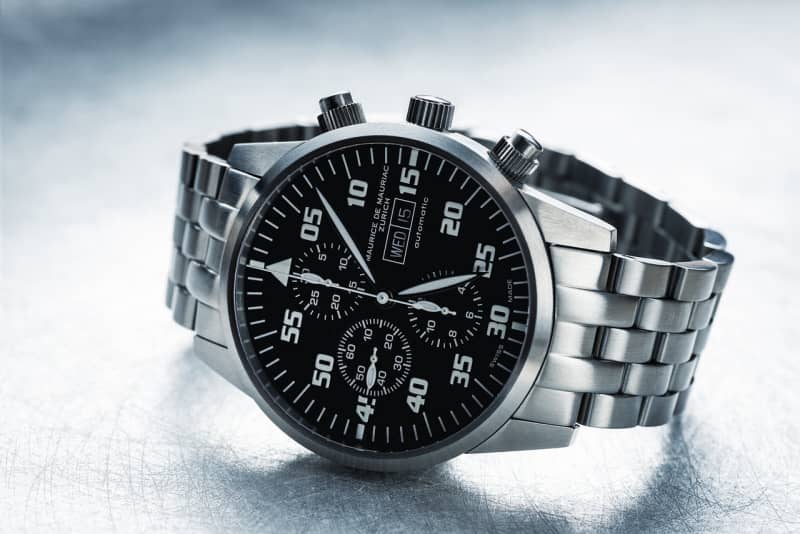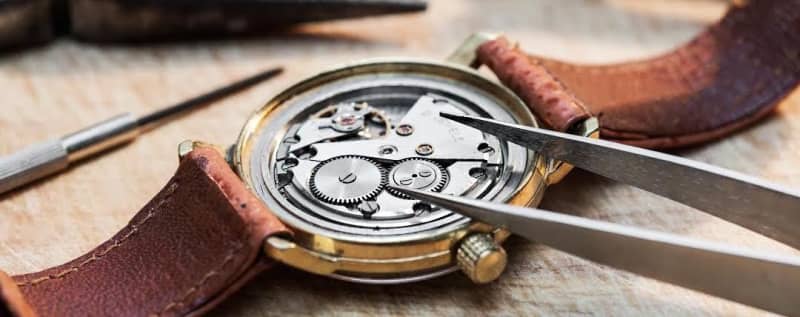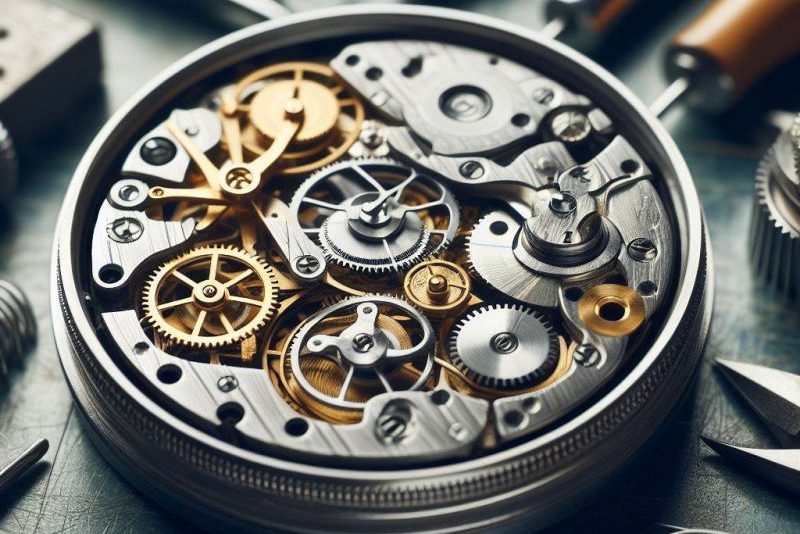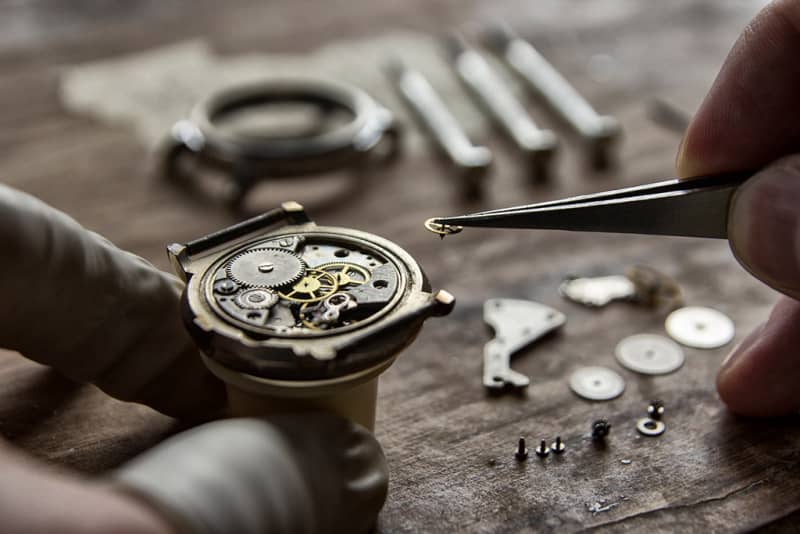Do you have an automatic watch that runs too fast? Are you wondering how to fix it? If so, this article is for you.
Automatic watches are a great way of keeping time accurately and conveniently without having to wind them up every day. But when they start running too fast, it can be frustrating and confusing.
It is common practice for watchmakers to detail the precision of their products. There may be a problem with the watch if its measurements deviate too far from these norms.
Nevertheless, given the sensitive nature of the mechanical movement, there may be a number of causes for an automated movement’s irregular rate of operation.
However, just because a watch’s movement is inaccurate doesn’t mean you have to toss the whole thing. That’s not the case at all.
A well-maintained mechanical watch may be handed down through the ages.
Fortunately, there are some simple steps that you can take to get your automatic watch back on track.
In this article, we’ll discuss how to diagnose the problem and then provide tips on how to fix an automatic watch that runs fast.
We’ll also explain why it might have started running faster in the first place and what measures you can take to prevent future issues with your timepiece. So let’s get started!

An automatic watch runs too fast when there is an issue with the gears and springs inside.
This can occur when the watch has been wound too tight or if it needs to be serviced or adjusted. When this happens, the internal mechanism of the watch loses accuracy and causes it to run faster than usual.
If you’ve been experiencing this issue with your automatic watch, here are some steps you can take to fix it.

There are many reasons for fast movements in automatic watches and here are some things you can do to fix it!
A watch’s precision may be affected by magnetism. Magnetism may affect the functioning of a mechanical movement since it is made up of small metal pieces.
As the hairspring is the beating heart of an automatic watch, any magnetism will have a noticeable effect on the precision of the timepiece.
Because magnetism slows the balance wheel’s revolution and speeds up the beat rate, magnets are often used to repair watches that run far too quickly.
A simple method is to demagnetize the watch. In point of fact, you won’t even need to wind up the clock.
It’s simply a matter of having the proper tool for the task. Even if you don’t happen to have a demagnetizing tool on hand, any reputable watchmaker should, and they’ll be able to get your watch back to normal in no time.
Watches may also become inaccurate due to shocks and gravity.
Automatic watches are especially susceptible to shock since their delicate inner mechanisms are constantly moving around. Even a minor jolt can cause the timepiece to run faster than normal.
Gravity can also have an effect on a watch’s accuracy, as it affects the balance.
The first step is to identify the source of the shock or gravity. If it was a minor jolt, then you may be able to repair your watch by simply resetting the time and fine-tuning its accuracy.
If there has been prolonged exposure to gravity, then it might be necessary to have your watch serviced by a professional.
Temperature changes can also affect the accuracy of an automatic watch.
When temperatures change, it can cause the lubricants inside of the watch to expand or contract, which in turn affects the timepiece’s movement and accuracy.
While most watches can withstand modest temperature fluctuations, others are specifically designed to function in extreme environments without losing precision.
In this case, you’ll need to have your watch serviced by a professional because it’s a bit impossible to fix the issue without specialized tools.
Most of the time, this is what causes an automated mechanism to operate too fast.
Automatic movements, like any other mechanical engineering, need regular maintenance to keep working correctly.
Having your automatic watch serviced by a professional is essential if you want it to last for many years.
Oils and lubricants dry out and get stale, which is one of the major reasons for service.
Because of this, there will be a normal increase in friction on the components that have the greatest need for lubricants.
Neglecting maintenance causes the watch to run without the oil it needs, which leads to increased friction and eventual component failure.
If you realize that the movement is old and needs service, it’s best to take it to a professional watchmaker.
Only they have the specialized tools and know-how necessary to bring your automatic watch back to its former glory.
It’s always a good idea to get your automatic watch serviced every two or three years to ensure its precision and accuracy.
If you don’t manually wind your watch, it won’t have the power to keep itself going.
Automatic watches depend on kinetic energy from your wrist movements to power their mechanism, and if you don’t wear them regularly, they won’t have the ambient energy it needs to keep ticking.
The simplest way to fix this problem is to wind up your watch every once in a while.
If you can’t do this regularly, then you can buy a mechanical watch winder.
These are devices that mimic the movements of your wrist and keep an automatic watch running without having to wear it.
By following these steps, you’ll be able to fix an automatic watch that runs fast and get it back in working condition.
With the right approach and a bit of patience, you’ll have your timepiece running like new again in no time!

The first step is to open up the watch and take a look at its components. If any of them show signs of wear or damage, it may be necessary to replace them.
The tools that you need to do these are:
To carefully open the watch’s back cover, you may need a case opener. And then use tweezers and a screwdriver to remove the movement from its case. Take note that some movements may need special tools to be removed.
Rust often indicates that water has penetrated into the movement and caused deterioration over time.
This could mean that you need to replace some parts, so be sure to examine this carefully before making your decision.
Any strange noise when winding or setting a watch is usually an indication that something isn’t working correctly inside its mechanism.
If you hear anything out-of-the-ordinary, then it might be time to consider replacing the movement directly instead of having it serviced or repaired elsewhere.
These noises could come from broken teeth or faulty bearings.
Lubricants will eventually dry out and become less effective, leading to an increase in friction and eventual component failure.
If you notice that the movement is dry or has not been properly serviced, then it may be necessary to replace the movement directly.
A lack of power reserve can indicate that there may be an issue with either individual components within the movement itself or with other internal parts requiring replacement such as seals, gaskets, etc.
In these cases, replacing all affected components will most likely restore accuracy and reliability once again. This is because parts that are out of date or worn down can also contribute to an automatic watch running too fast.
If your automatic watch is more than 5 years old, then it’s probably time to either have it serviced or replace the movement.
Old timepiece movements are more prone to wear and tear, so it’s best to address the issue before it becomes a bigger problem.
Or, you can consult a professional watchmaker who can assess the condition of your movement and determine whether it needs to be replaced or serviced.
Proper maintenance is key to ensuring that your automatic watch runs accurately and reliably.
By regularly cleaning the watch’s exterior and interior components, you can ensure that it is functioning optimally for years to come.
You might also want to bring it in for regular servicing or repair from a qualified professional every few years.
Modern automatic watches are usually designed to be more reliable and resilient than their older counterparts, meaning that they can last longer without needing repairs or service.
The latest automatic watch designs are often equipped with features that can help avoid the common problems associated with running fast.
One such feature is a more advanced movement design, often featuring components made of more durable materials that are better able to withstand wear and tear.
Additionally, modern automatic watches often come with a higher quality power reserve, meaning they can retain time more accurately across longer periods of use.
These power reserve systems are also often designed to be more efficient, using less energy and helping the watch remains reliable for longer.
Lastly, many modern automatic watches also have an increased level of accuracy thanks to new technologies such as GPS-driven systems or atomic clocks.
These features help the watch maintain accurate timekeeping even over long distances and fluctuating temperatures.
Ultimately, these advanced features can help you avoid having your watch run too fast in the first place.
By understanding how to assess whether it is necessary to replace the movement directly and taking advantage of the latest technological advancements in automatic watches, you can ensure that your watch runs smoothly and reliably for years to come.
However, take note, that as much as the watchmakers strive to create the best automatic watches, nothing beats proper maintenance. Therefore always make sure to give your automatic watch regular cleanings and services if you want it to keep running like new.
With the right care and maintenance, your automatic watch can continue to provide a reliable and accurate timekeeping experience for many years to come.
Keep these tips in mind the next time you need to fix an automatic watch that runs fast.
An automatic watch that runs too fast can be incredibly frustrating, but thankfully there are steps you can take to fix it.
The first step is to identify the cause of the problem; whether it’s magnetism, shocks, or gravity. Once you’ve identified the source, you can then take steps to fix the issue, such as cleaning or replacing components.
Finally, it’s important to consider modern features like advanced movement designs, higher quality power reserves, and improved accuracy to help avoid the issue in the future.
With these tips and considerations, you can ensure that your automatic watch runs smoothly and accurately for years to come.
The intricate mechanism of each watch is a work of art. Every luxury watch has its level of craftsmanship and quality. Each is created artistically by expert watchmakers making the timepiece have an elegant design and accurate timekeeping. But, luxury watch collectors prefer mechanical or automatic movements. Let yourself fall into one of the types of a watch movement and share your ideas below if you have different insight!

Copyright © 2018 Sofly Limited



Leave a Reply
Your email address will not be published. Required fields are marked *